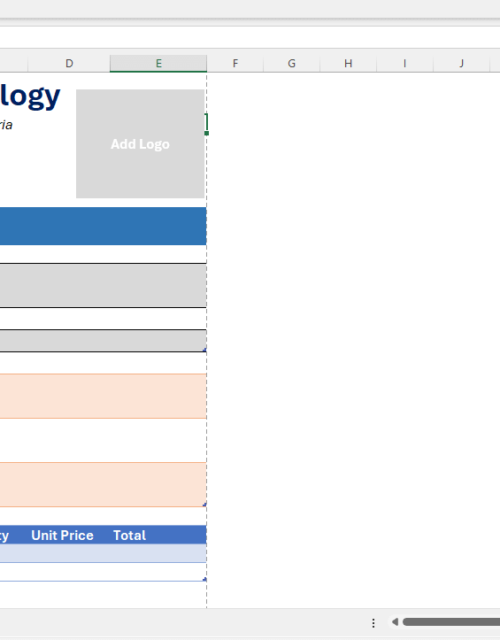Unlocking Business Resilience: The Key Strategies for 2023

In an ever-changing business landscape where the rules are continually rewritten, business resilience is no longer an option—it’s a necessity. From rapid technological advancements to global economic uncertainties, 2023 poses its own set of unique challenges. How can your business ensure it will not only survive but flourish?
Whether your business operates online or off, being flexible is vital to its survival. In this comprehensive guide, we explore key strategies for making it more robust in 2023 and ready for 2024.
The Role of Technology: Enhancing Business Resilience
One way technology enhances business resilience is by improving communication and collaboration. With tools like video conferencing, project management software, and cloud-based storage systems, teams can stay connected and work together seamlessly, even when faced with disruptions or remote work situations. This enables businesses to adapt quickly and continue operations without major disruptions.
Another aspect where technology excels is data management and analysis. Businesses may mine massive amounts of data for insightful information by utilizing advanced analytics and artificial intelligence. Organizations may spot trends, patterns, and potential hazards using this data-driven approach, allowing them to make wise decisions and take preventative action to fend off threats.
Additionally, organizations may automate procedures and streamline operations thanks to technology, which lowers human error rates and boosts productivity. AI, machine learning, and cloud services all play essential roles – AI can automate tasks to reduce manual errors, cyber security tools protect from online threats while cloud solutions make data accessible; both factors are necessary for eCommerce or marketing businesses that rely on cloud storage solutions; while CRM systems improve customer service – essential factors when considering resilience as an element of business survival.
Technology also gives organizations the power to diversify and broaden their customer base. E-commerce platforms and digital marketing technologies allow businesses to reach new customers, broaden their target market, and create various income streams. This diversification helps companies weather downturns in specific industries or regions, enhancing their resilience in the face of adversity.
Diversification Tactics: Spreading Risks to Enhance Business Stability
Diversification is about spreading risks to mitigate potential losses. For instance, an eCommerce business might diversify by adding new product categories or entering new markets. In marketing, diversification might mean offering various services like SEO, content marketing, and PPC advertising. Always consider doing market research and risk analysis and then implementing and evaluating the diversification tactics to ensure they effectively contribute to business resilience.
- Types of Diversification
- Product Line Expansion – This type of diversification involves expanding your existing product line to cater to different customer needs or target new markets. To complement its makeup line, a cosmetics business might launch a new range of skincare goods. They can reach a new clientele and expand their market share by capitalizing on their current brand recognition.
- Geographic Expansion – If you want to reach more customers, expanding into new geographic regions can be a smart move. This could involve opening new stores or branches, targeting customers in different countries or even expanding online operations. A clothing retailer, for instance, may decide to enter international markets as a way to increase sales and gain global brand recognition.
- Market Penetration – This strategy focuses on increasing market share in existing markets or segments. It involves intensifying marketing efforts, improving customer retention, and gaining a competitive edge. By identifying new distribution channels, offering better pricing or incentives, and enhancing customer satisfaction, a company can solidify its position and attract more customers.
- Steps to Diversification
- Market Research- Understand current market trends, customer preferences, and competitor activities to identify potential opportunities and gaps in the market.
- Risk Analysis – Assess the potential risks and challenges associated with diversification, including financial risks, operational hurdles, and potential customer resistance.
- Implementation- Develop and execute a detailed plan that outlines the necessary resources, timelines, and responsibilities for each step.
- Evaluation- Regularly monitor and evaluate the progress of your diversification efforts. This will help identify any areas that need improvement or adjustment.
Expanding your array of marketing or eCommerce services enables you to navigate declines in any sector, enriching your business’s overall resilience with an innovative tool like squadhelp to brainstorm ideas.
Scenario Planning: Preparing for Multiple Futures to Strengthen Business Resilience
Scenario Planning Scenario planning allows businesses to prepare for future scenarios by envisioning various possibilities in advance, for instance, potential economic downturns, sudden shifts in consumer behavior, or disruptions to supply chains. Planning different outcomes helps companies allocate their resources more strategically while remaining resilient against unexpected obstacles by being prepared.
- Importance of Scenario Planning
- Prepare for the unpredictable- Scenario planning helps organizations prepare for a wide range of unforeseen events and external influences that can impact their operations. By developing and analyzing different scenarios, businesses can identify potential risks and devise strategies to mitigate them.
- Allows better allocation of resources- By considering different scenarios, organizations can identify potential resource gaps or excesses and adjust their allocation accordingly. This ensures that resources are utilized optimally, thus enhancing overall operational efficiency and performance.
- Steps to Effective Scenario Planning
- Identifying Variables- This could include factors such as technological advancements, market trends, regulatory changes, or socio-economic shifts. Thoroughly researching and understanding these variables will form the foundation of your scenario planning process.
- Building Scenarios- Develop multiple plausible scenarios based on different combinations and outcomes of the identified variables. These scenarios should be diverse enough to capture a wide range of potential futures, yet still relevant and realistic to your organization.
- Strategy Development- Once you have built your scenarios, analyze each one and develop strategies that align with the specific characteristics and outcomes of each scenario. This will enable your organization to be better prepared to adapt and respond strategically to changing circumstances.
Engaging in scenario planning can prepare your business for everything from economic downturns to abrupt market changes, thus strengthening its resilience.
Sustainability Practices: Making Eco-Friendly Choices for Long-term Viability
Engaging in eco-friendly practices such as carbon reduction or sustainable sourcing may attract additional consumers while positioning your organization for future environmental regulations – and may lead to cost savings over time.
- Why Sustainability Matters
- Increases consumer trust- When businesses prioritize sustainability, consumers are more likely to feel confident in their products and services, translating into increased loyalty and sales.
- Regulatory benefits- By proactively implementing sustainable practices, businesses can easily comply with regulations, avoiding penalties and reputational damage.
- Long-term cost savings- By optimizing energy and resource usage, businesses can reduce operational costs, such as electricity bills and raw material expenses.
- Sustainable Strategies
- Carbon footprint reduction- By adopting energy-efficient technologies, implementing renewable energy sources, and promoting responsible transportation practices, businesses can significantly decrease their carbon footprint and contribute to a healthier planet.
- Sustainable sourcing- Businesses can prioritize sourcing from suppliers who adhere to sustainable practices, such as ethical labor and low environmental impact. This not only benefits the environment but also promotes a positive brand image.
- Waste management- Implementing strategies such as recycling, composting, and reducing packaging waste can significantly contribute to sustainable practices. By incorporating waste management into business operations, companies demonstrate their commitment to sustainability.
Adopting sustainable practices enhances your business image and prepares it for future regulations, thereby contributing to its resilience.
Building Financial Buffers: How Resilient Businesses Plan for Uncertain Times
A solid financial buffer is crucial for any resilient business. It allows you to withstand unexpected blows without capsizing.
- Importance of Financial Buffers
- Cash flow management- You can allocate funds to emergency reserves and other financial buffers, thus safeguarding against unforeseen circumstances.
- Emergency Preparedness- Setting up an emergency fund is a wise step towards building your financial buffers. This fund should ideally cover at least three to six months of living expenses, allowing you to navigate through unexpected situations with ease.
- Steps to Building Financial Buffers
- Emergency Fund- Save at least 3 to 6 months’ worth of living expenses for unexpected situations.
- Diverse Revenue Streams- Explore additional income sources to supplement your primary source of income.
- Cost-Cutting Strategies- Analyze your expenses and find ways to reduce unnecessary spending.
By building a financial buffer, your business gains the flexibility and stability it needs to navigate rough waters.
Conclusion
In the volatile business environment of 2023, resilience is your secret weapon for long-term success. From leveraging technology and diversifying your offerings to real-time analytics and financial planning, each strategy is a building block for a robust, future-proof enterprise. Now more than ever, planning, preparing, and adapting is vital. The future’s flexible, but you can carve your path through any obstacle with these strategies. Whether in eCommerce, marketing, or any other sector, it’s time to upgrade your strategies and unlock business resilience for 2023 and beyond.









